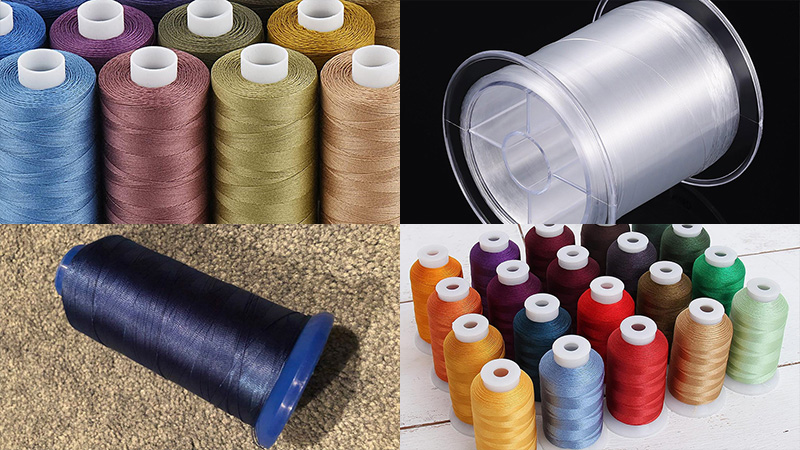
Embarking on a sewing project is like embarking on a creative journey, and just as a traveler selects the right path, choosing the appropriate sewing thread sets the course for success.
With an array of thread types and materials at your disposal, making an informed choice is key to achieving impeccable results. Delving into the realm of sewing threads opens a world of possibilities, where the interplay of fiber content, ply, and twist defines the quality of your creation.
We’ll navigate this diverse landscape, unraveling the intricacies of each thread type and guiding you towards a seamless selection process for your next sewing adventure.
1. Nylon Thread
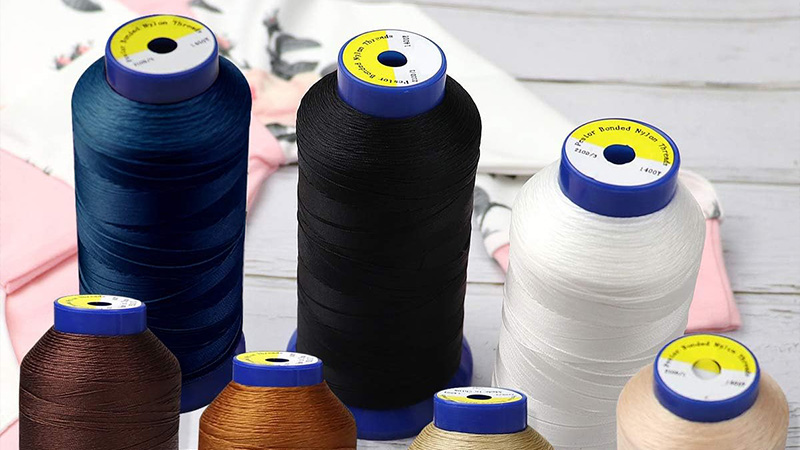
Nylon thread, renowned for its remarkable strength and elasticity, is a versatile choice for heavy-duty sewing tasks. Its durability makes it ideal for stitching heavy fabrics like leather, canvas, and upholstery.
Additionally, nylon thread’s resistance to moisture and mildew renders it perfect for outdoor projects. Whether crafting rugged outdoor gear or repairing sturdy materials, nylon thread ensures long-lasting results, emphasizing both functionality and resilience in your sewing endeavors.
2. Metallic Thread
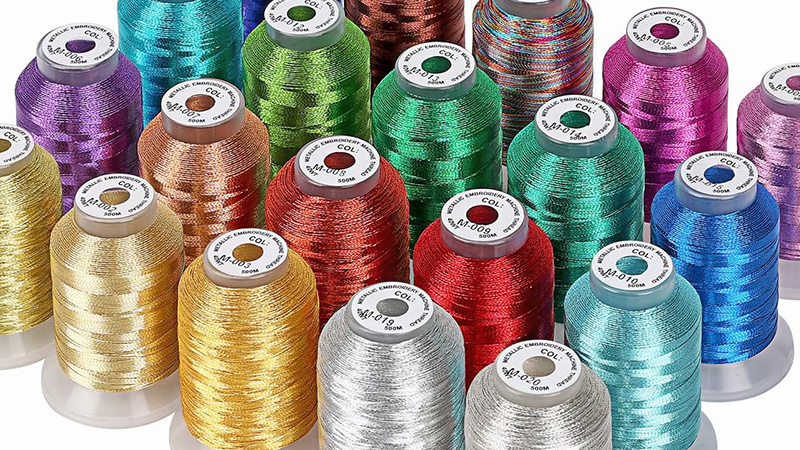
Metallic fibers are a type of manufactured fiber that are composed of a variety of materials including metal, metallic alloys, plastic-coated metal, metal-coated plastic, or a core that is completely covered by metal.
These fibers have their origins in textile and clothing applications and have been used since ancient times to create decorative fabric. For example, gold and silver fibers have long been used as yarns to create intricate patterns and designs.
Metallic fibers provide a unique texture to fabrics, giving it a luxurious and elegant appearance. They also have excellent strength and durability, making them a popular choice for a variety of applications.
In addition, metallic fibers can be dyed and colored easily, providing a wide array of design options.
3. Embroidery Thread
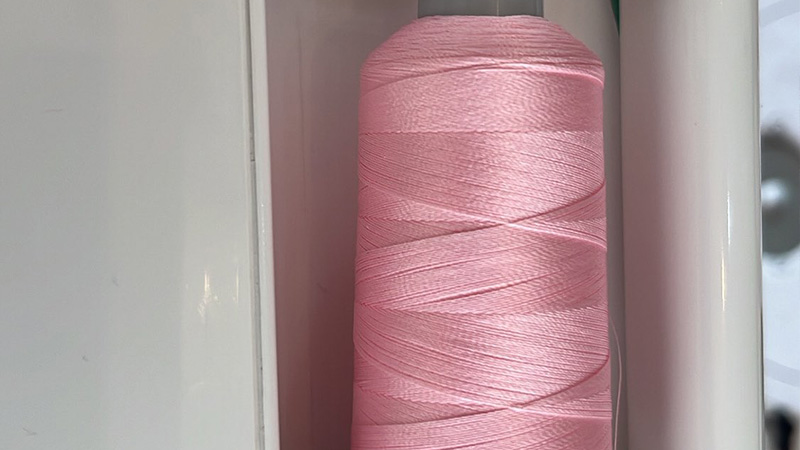
Embroidery thread is a special type of yarn that is specifically designed for use in embroidery and other forms of needlework. This type of yarn is usually produced in a variety of different fibers, colors, and weights to provide the crafter with a wide range of options.
For example, the type of thread used for a small, delicate project might be different from the type used for a large, bold project. Additionally, the colors of the thread can range from soft and subtle shades to bright and vibrant tones.
Furthermore, the weight of the thread can range from thin and delicate to thick and strong. Ultimately, the variety of thread types available ensures that the crafter can find the perfect thread type for their project.
4. Linen
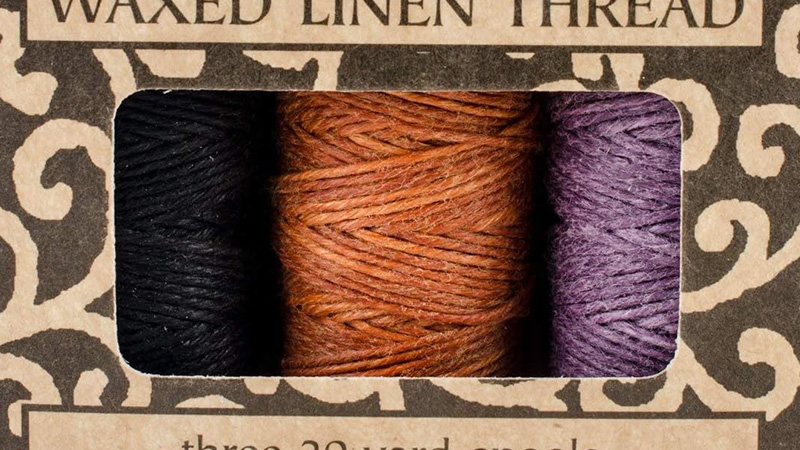
Linen is a type of fabric made from the fibers of the flax plant, which is a tall, slender plant that produces long, thin fibers. These fibers are used to make yarn, which is then woven or knitted into fabric.
Linen is known for its strength and absorbency, as well as its ability to dry quickly. These properties make it a great fabric to wear in hot weather, as it is lightweight and breathable and provides a comfortable fit.
Linen is also valued for its durability and can withstand wear and tear, making it a great choice for garments that need to last. Linen fabrics come in a variety of colors and patterns and can be used for clothing, bedding, towels, tablecloths, and much more.
It is a versatile fabric that can be used for a variety of purposes.
5. Invisible Thread
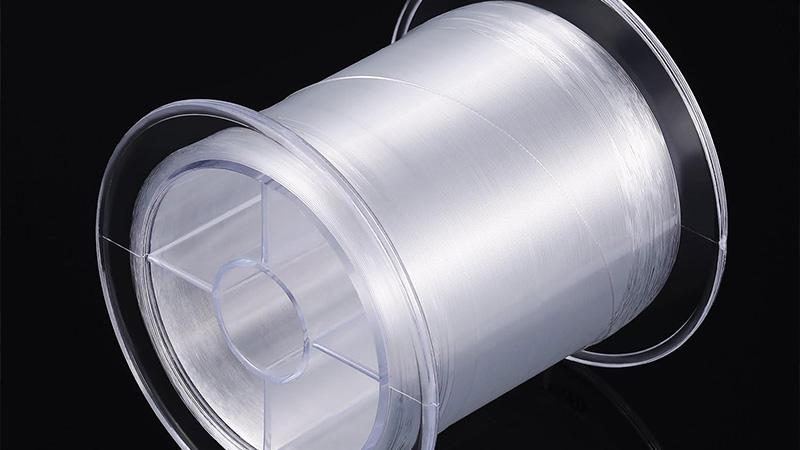
Invisible thread, often monofilament, is a crafty marvel for discreet stitching. With a transparent or translucent appearance, it vanishes into the fabric, making it perfect for invisible hems, appliqué, and delicate embellishments.
This thread’s almost magical ability to hide in plain sight adds a touch of finesse to your projects, allowing fabrics and designs to shine without the distraction of visible stitches.
Whether you’re creating ethereal designs or seamless finishes, invisible thread becomes your secret weapon for achieving polished and seamless results, ensuring that your stitches stay hidden while your creativity takes center stage.
6. Quilting Thread
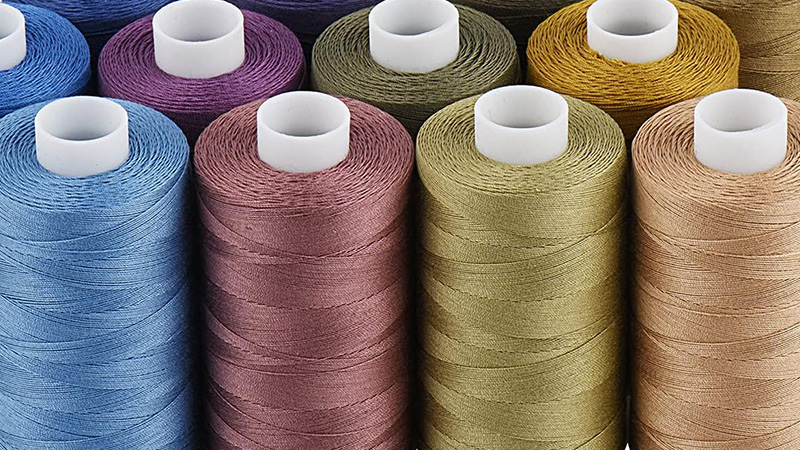
Quilting thread is a specialized stitching companion designed to elevate your quilting projects. With its distinct characteristics, it’s tailored to the art of quilting.
It’s usually made of sturdy materials like cotton or polyester and comes in various weights. This thread is thicker than regular sewing thread, allowing it to stand out against the layers of fabric and batting in quilts.
Its strength and durability ensure that your quilts can withstand the test of time. Whether you’re machine-quilting intricate designs or hand-quilting a cozy masterpiece, quilting thread plays a vital role in creating stunning, enduring quilts that tell a story with every stitch.
7. Textured Thread
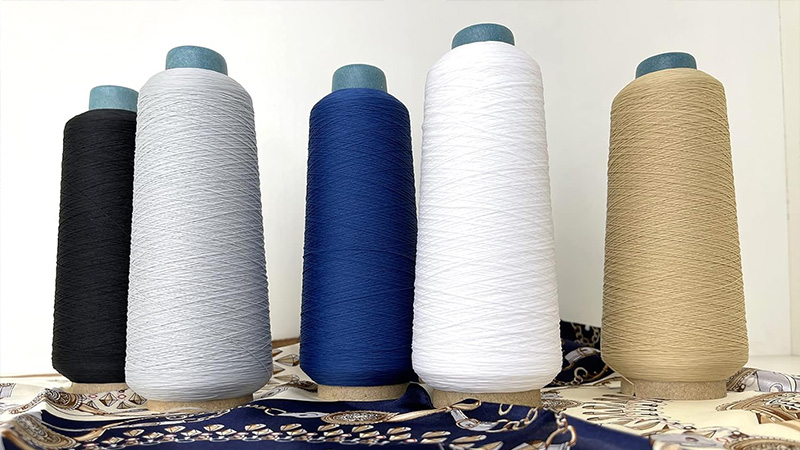
Textured thread adds depth and dimension to your creative projects, making them stand out in captivating ways. This unique thread type boasts various textures, such as nubs, loops, or twists, that create a tactile and visual appeal.
Whether you’re embroidering, embellishing, or creating surface effects, textured thread brings a dynamic element to your designs. It transforms ordinary stitches into extraordinary textures, lending a tactile quality that engages the senses.
By incorporating textured thread, you infuse your projects with a rich visual and sensory experience, showcasing your artistic prowess and elevating your crafting endeavors to a new level of creativity.
8. Monofilament Thread
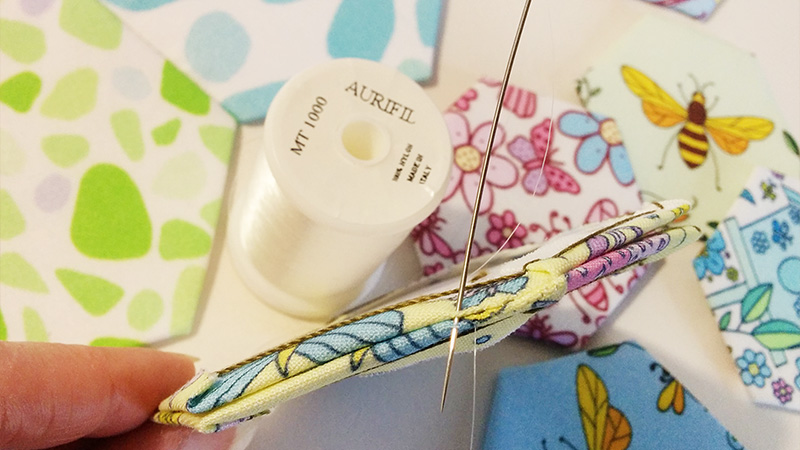
Monofilament thread, a transparent sewing wonder, offers an elusive touch to your stitching endeavors. Crafted from a single strand of synthetic material, it vanishes into fabrics, rendering stitches nearly invisible.
This quality makes it a go-to choice for various applications, from invisible hems to appliqué and delicate fabrics. Monofilament thread’s ability to blend seamlessly with fabric showcases your work without overshadowing it with visible stitches.
As it discreetly enhances your projects, this thread type ensures that your craftsmanship remains the focal point, allowing your creativity to shine while maintaining a polished and sleek appearance.
9. Mercerization
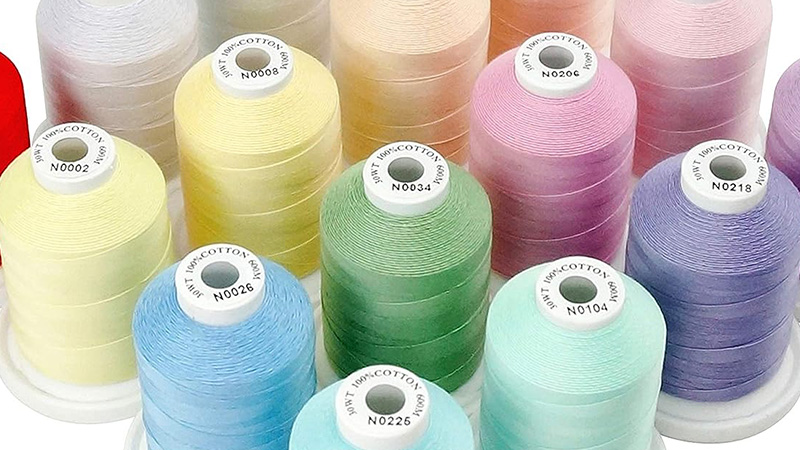
Mercerisation is a technique used to give cellulose fabrics such as cotton and flax a silky, glossy appearance. It also increases the strength of the fabric by increasing its tear strength, while also minimizing fabric shrinkage.
This is achieved by immersing the fabric in a strong alkali solution, which causes the fibers to swell and become more receptive to dyes. This process also increases the fabric’s luster, making it more attractive.
The alkali also increases the fabric’s absorbency, which allows the fabric to take in more dye, leading to a deeper and richer colour. Additionally, this process can also increase the tensile strength of the fabric, making it more resistant to tearing and wear.
After mercerisation, the fabric is usually rinsed with water or acid, and dried. The end result is a fabric that is more durable, with a luxurious look and feel.
10. Rayon Thread
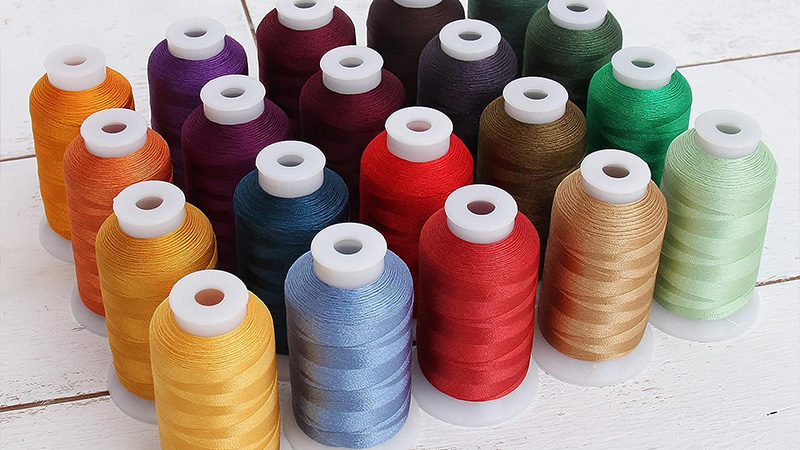
Rayon thread is a lustrous and versatile stitching companion that adds a touch of elegance to your creations. Made from cellulose fibers, it boasts a silky sheen that enhances embroidery, decorative stitching, and embellishments.
With an extensive range of vibrant colors, rayon thread brings vibrancy and depth to your designs. Its smooth texture glides through fabrics effortlessly, making it perfect for intricate embroidery projects.
Whether you’re adding intricate details to garments or crafting decorative accents, rayon thread lends a luxurious finish to your work, elevating your creations with its shimmering beauty and enhancing the overall visual appeal.
11. Wool Thread
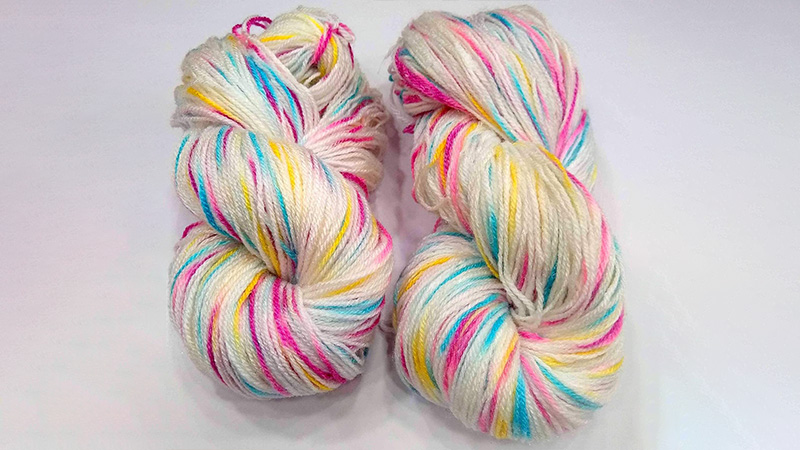
Wool thread, a cozy and rustic stitching essential, imparts a warm and textured touch to your projects. Crafted from natural wool fibers, it’s ideal for hand embroidery and decorative stitching on fabrics like wool and textured materials.
With its soft and fuzzy texture, wool thread adds depth and dimension to your creations, creating a tactile element that engages the senses. Whether you’re embellishing cozy blankets, crafting winter-inspired designs, or adding rustic charm to garments, wool thread lends a distinct and inviting character to your work.
Its ability to evoke comfort and nostalgia makes it a favorite choice for projects that demand a touch of cozy creativity.
12. Bobbin Thread
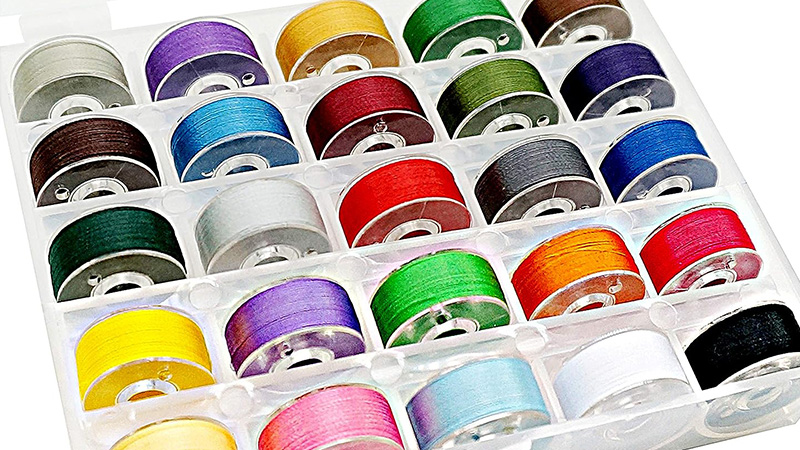
Bobbin thread is a fundamental yet often overlooked component of sewing that plays a crucial role in achieving smooth and balanced stitches. Specifically designed for use in the bobbin of a sewing machine, this lightweight and finer thread ensures that the tension between the top thread and bobbin thread is well-balanced, leading to neat and even stitches on both sides of the fabric.
Bobbin thread is usually thinner and comes in larger spools to accommodate the higher thread usage in the bobbin. While it’s not meant for visible stitching, its impact on the overall quality of your sewing projects is undeniable, contributing to professional and well-finished results.
13. Heavy Duty Thread
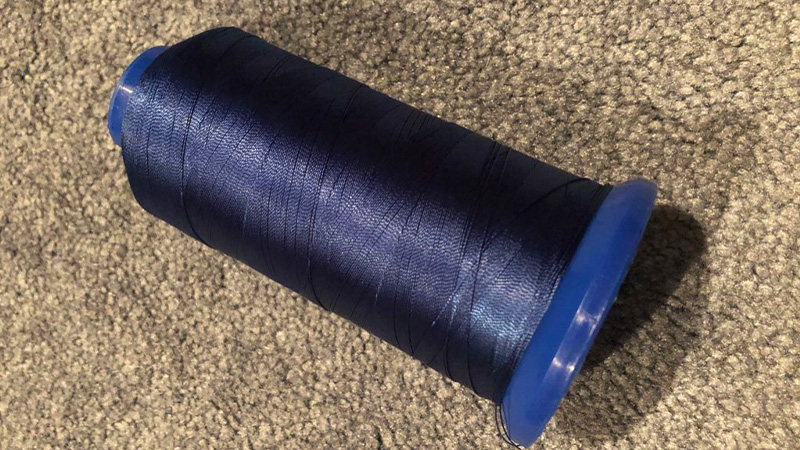
Heavy-duty thread is a robust stitching solution engineered to tackle projects that demand exceptional strength and durability. Crafted from sturdy materials like polyester, nylon, or even specialized blends, this thread type is designed to withstand the rigors of heavy fabrics, tough materials, and demanding applications.
Whether you’re sewing leather, canvas, denim, or upholstery, heavy-duty thread ensures your stitches hold up over time. With its high tensile strength and resistance to wear and tear, it’s an essential tool for crafting items that need to endure heavy use, ensuring your creations remain intact and functional, even under challenging conditions.
14. Mercerized Cotton Thread
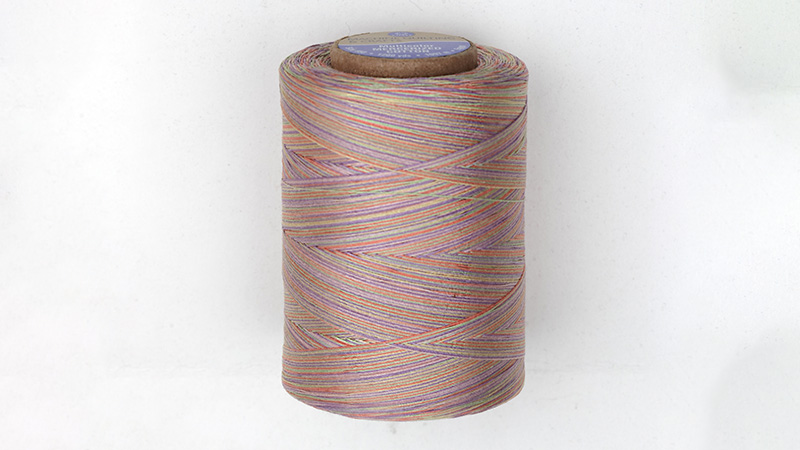
Mercerized cotton thread is a versatile gem in the sewing world. Cotton fibers are treated with a mercerization process, enhancing their strength, sheen, and dye absorption.
This results in a lustrous and durable thread that’s perfect for various projects. Mercerized cotton thread offers the best of both worlds, combining the softness of cotton with a luxurious finish.
Ideal for garment construction, quilting, and embroidery, it glides smoothly through fabrics, creating crisp and even stitches. Its enhanced qualities make it a popular choice, ensuring your creations not only possess visual appeal but also stand the test of time with the durability of cotton.
15. Soft Cotton Thread
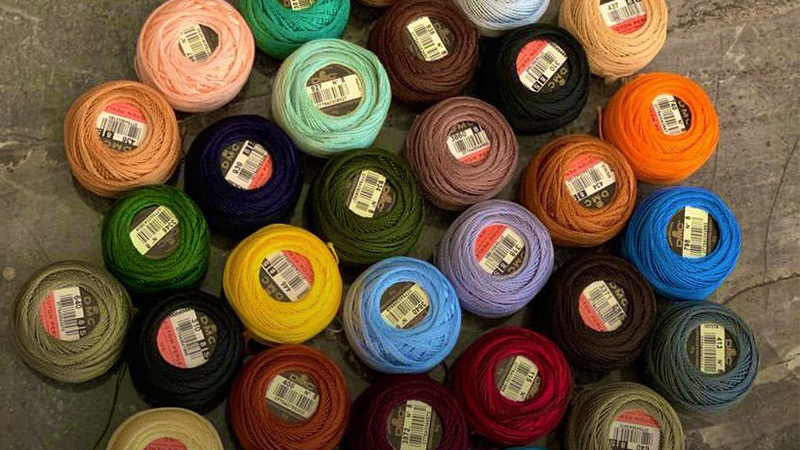
Soft cotton thread is a comforting companion for your sewing ventures. Crafted from pure cotton fibers, it embraces your projects with a gentle touch.
This thread type is ideal for delicate fabrics, children’s clothing, and cozy home textiles. Its softness prevents irritation on sensitive skin and ensures a smooth, seamless finish.
As it effortlessly glides through your sewing machine, it maintains the natural feel of cotton, creating a tactile connection between your stitches and your materials.
With soft cotton thread, you infuse your creations with comfort and warmth, making every stitch a testament to both craftsmanship and the inherent coziness of cotton.
16. Aramid Thread
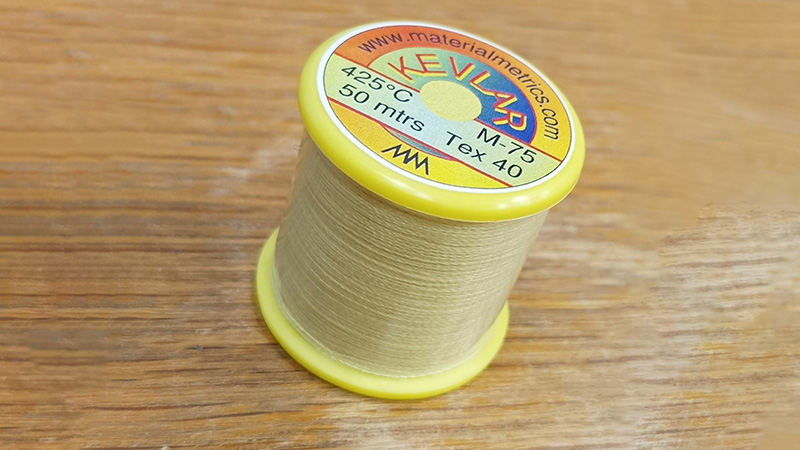
Aramid thread, a powerhouse of strength and resilience, is a specialized thread designed for projects that demand exceptional durability. Derived from aramid fibers, which are known for their outstanding heat and flame resistance, this thread type is a favorite for applications like heavy-duty sewing, upholstery, and even industrial use.
Aramid thread’s high resistance to heat, chemicals, and abrasion make it a go-to choice for projects in extreme conditions. Whether you’re crafting protective gear, outdoor equipment, or items that require steadfast performance, aramid thread ensures that your stitches remain steadfast, reinforcing your creations with a layer of unmatched durability and reliability.
Conclusion
The world of sewing threads is a diverse realm where the right choice can elevate your creations to new heights. Whether it’s the strength of polyester, the elegance of silk, the comfort of cotton, or the durability of nylon, each thread type brings its own magic to the sewing process.
By understanding the nuances of these thread varieties and matching them to the demands of your projects, you unlock the potential for flawless outcomes.
So, remember to consider the fabric, purpose, and desired aesthetic when selecting your thread. Armed with this knowledge, your sewing journey becomes a symphony of creativity, where the perfect thread harmonizes with your craft to produce stunning, enduring masterpieces.
Leave a Reply